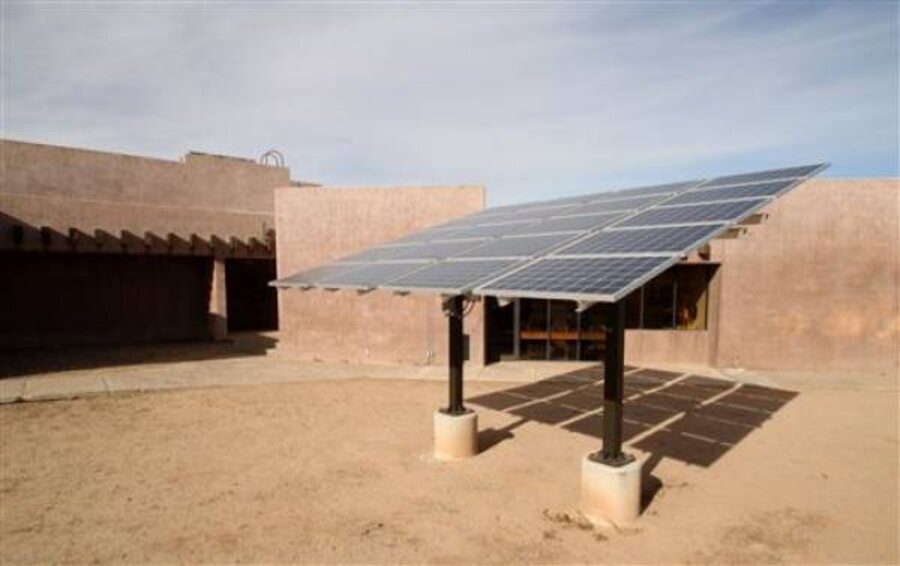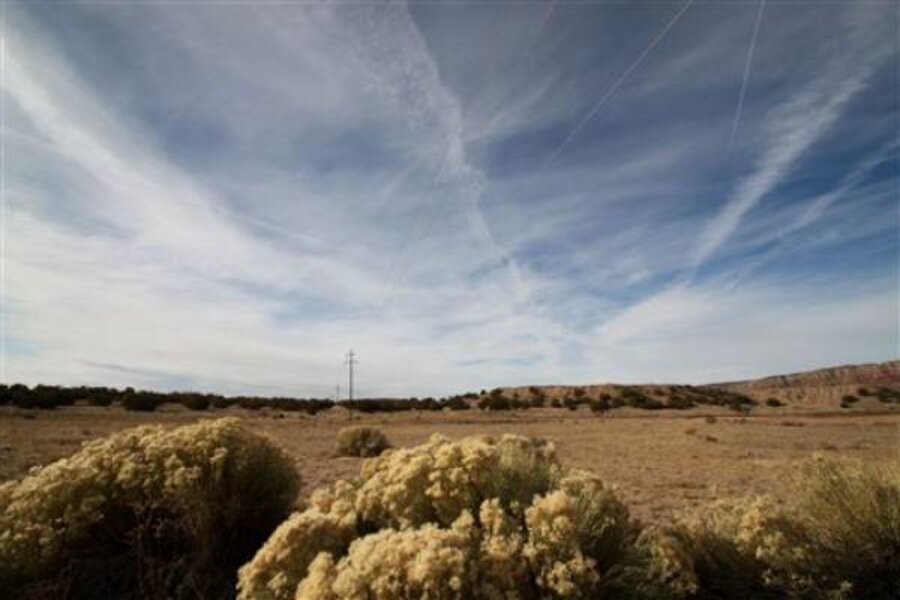Indian tribe sees bright future in solar power
| JEMEZ PUEBLO, N.M.
A poverty-stricken Indian tribe that holds the sun and nature's other gifts sacred sees a brighter future for itself in solar power.
The 3,000 members of the Jemez Pueblo are on the verge of building the nation's first utility-scale solar plant on tribal land, a project that could bring in millions of dollars.
Experts say tapping into the sun, wind and geothermal energy on Indian land could generate the kind of wealth many tribes have seen from slot machines and blackjack tables.
"We don't have any revenue coming in except for a little convenience store," says James Roger Madalena, a former tribal governor who now represents the pueblo in the state Legislature. "It's very critical that we become innovative, creative, that we come up with something that will last generations without having a devastating impact on the environment."
The 30-acre site where 14,850 solar panels will be set up has been selected, and after four years of arduous planning and negotiations, a contract to sell outsiders the electricity produced by the four-megawatt operation is at hand. The plant would be capable of cranking out enough electricity to power about 600 homes.
The project — which would cost about $22 million, financed through government grants, loans and tax credits — could bring in around $25 million over the next 25 years. That could help the tribe improve its antiquated drinking water system and replace the lagoons it uses to treat wastewater.
Renewable energy is a new option for bringing revenue to Indian country, where many communities are poverty-stricken and unemployment is often double the national rate. Jemez Pueblo's effort comes after the federal government in 2008 turned down a request to let it build a casino because the proposed site was too far away from the community.
"Not every tribe is a gaming tribe, but every tribe is an energy tribe," says Roger Fragua, a Denver-based consultant who works with the Council of Energy Resource Tribes.
Indian tribes control more than 55 million acres of land across the nation, and those lands are capable of producing an estimated 535 billion kilowatt hours of electricity per year from wind power, according to the U.S. Department of Energy's Tribal Energy Program. Solar has even greater promise, at 17 trillion kilowatt hours per year, or more than four times the amount of electricity generated annually in the U.S.
"There's huge potential," says Jerry Pardilla, executive director of the National Tribal Environmental Council.
President Barack Obama acknowledged the possibilities during a meeting last fall with leaders of the nation's tribes. He says he would work to ensure tribes have access to transmission and financing for energy projects.
From 2002 to 2008, the Tribal Energy Program funded nearly 100 projects totaling $16.5 million. A 2005 federal law authorizes up to $20 million for the program each year.
One of the leading tribes has been the Campo Kumeyaay Nation outside of San Diego. It is home to a 50-megawatt wind farm, and the tribe is joining forces with San Diego Gas & Electric Co. to build a second wind farm capable of producing 160 megawatts. Tribal wind farms have also sprouted up across the Midwest.
However, the development of solar power on Indian land is in its infancy. While many tribes use solar panels to power casinos and individual homes, Jemez
Pueblo is leading the way in developing a grid-connected solar array for selling power to outside customers.
Every fall, Jemez Pueblo gives thanks to nature in an age-old harvest celebration during which dancers wearing headdresses and jingling bells pound the ground with their feet to the beat of drums. Tribal members hold the sun sacred as the source of the warmth and light needed to grow crops in this remote area about 50 miles northwest of Albuquerque.
Just beyond the dirt baseball diamond and cinderblock dugouts are the rolling hills dotted with pinon and prickly pear cactus where the panels will be laid out and connected to the transmission line already overhead.
State and federal grants have covered many of the tribe's planning costs, while engineers and legal firms have donated their expertise.
"We know other tribes are interested in doing the very same thing, and they're following our project to see what kind of success we have," says Greg Kaufman, an environmental scientist who works with the pueblo's Resource Protection Department.
The tribe is not looking to get wealthy with its solar panels, Mr. Kaufman says. He says tribal leaders' primary concern is making life better for tribal members.
Experts say demand for renewable energy in the U.S. will continue to grow as the government tries to reduce greenhouse gas emissions, and Indian tribes could play a big role.
"Indian people have always given," Mr. Fragua says. "We have an opportunity to give once again to America and her energy security."
Editor’s note: The Monitor's Environment section has a new URL. And there's a new URL for its Bright Green blog. We hope you'll bookmark these and visit often.






